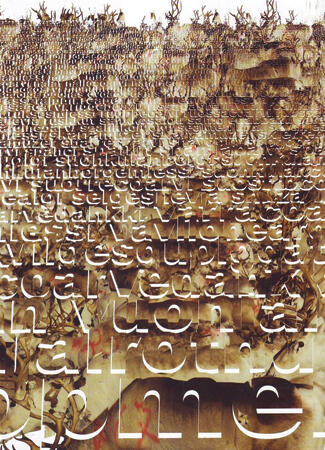Antonio Briceño
Sala de Expediciones BOD-Corp Banca Centro Cultural, Caracas
Finland is one of the northernmost countries in Europe. To Latin Americans, this country situated between parallels 60° and 70° N, may seem so far away. A country with a third part of its territory lying within the Arctic Circle, and with a mean annual temperature below 0°C. These extreme climatic conditions, however, do have a fascinating aspect in terms of the behavior and the way of life of the wonderful people who inhabit it. In such a way that climate researchers regard this place, characterized by icy temperatures, as an example of adaptation of people to their environment. We know that in the almost eternal immensity of snow that surrounds them, they handle in their language many shades of white − which are foreign to those of us who live in the tropic, where one is blinded by the brilliance of the light. It is to be expected that a native person perceive in that snow much more than what a layman can distinguish.

Antonio Briceño (Caracas, 1966) became interested in those people and their environment. He investi- gated the nomadic Sámi people and discovered − through a journalist whose thesis was focused on their traditional language − that the Sami have 520 words to identify reindeer based on their color, hair, horns and sex. The fact is that the people of Lapland identify themselves to such an extent with the reindeer that they can recognize each one of the animals in their herds. The subject captivated the artist and he prepared a photography exhibition which he entitled “520 reindeer. A tribute to the Sámi Culture”, in which he reflected the identification of these native people with those animals, with the landscape, the climate and the light of this environment.
The exhibition reached its culminating point with the artist’s superimposed photographs, in which language, landscape, and animals printed in transparent acrylic sheets and presented in layers epitomized the Sámi’s identification with that mythical place covered with almost eternal snow. The city dweller abandons his/her animal instinct, but indigenous people, independently of the fact that they may wear Western clothes − a result of globalization − retain their sense of belonging to the environment. It is a way of surviving in this environment, and an ecologically sound way of assuming it.
-
 Mika Saijets’s 520 reindeer. Superimposed photographs on acrylic, 59 x 59 in. Photograph: Antonio Briceño. Los 520 renos de Mika Saijets Superposición de fotografías sobre acrílico, 150 x 150 cm. Fotografía: Antonio Briceño
Mika Saijets’s 520 reindeer. Superimposed photographs on acrylic, 59 x 59 in. Photograph: Antonio Briceño. Los 520 renos de Mika Saijets Superposición de fotografías sobre acrílico, 150 x 150 cm. Fotografía: Antonio Briceño




